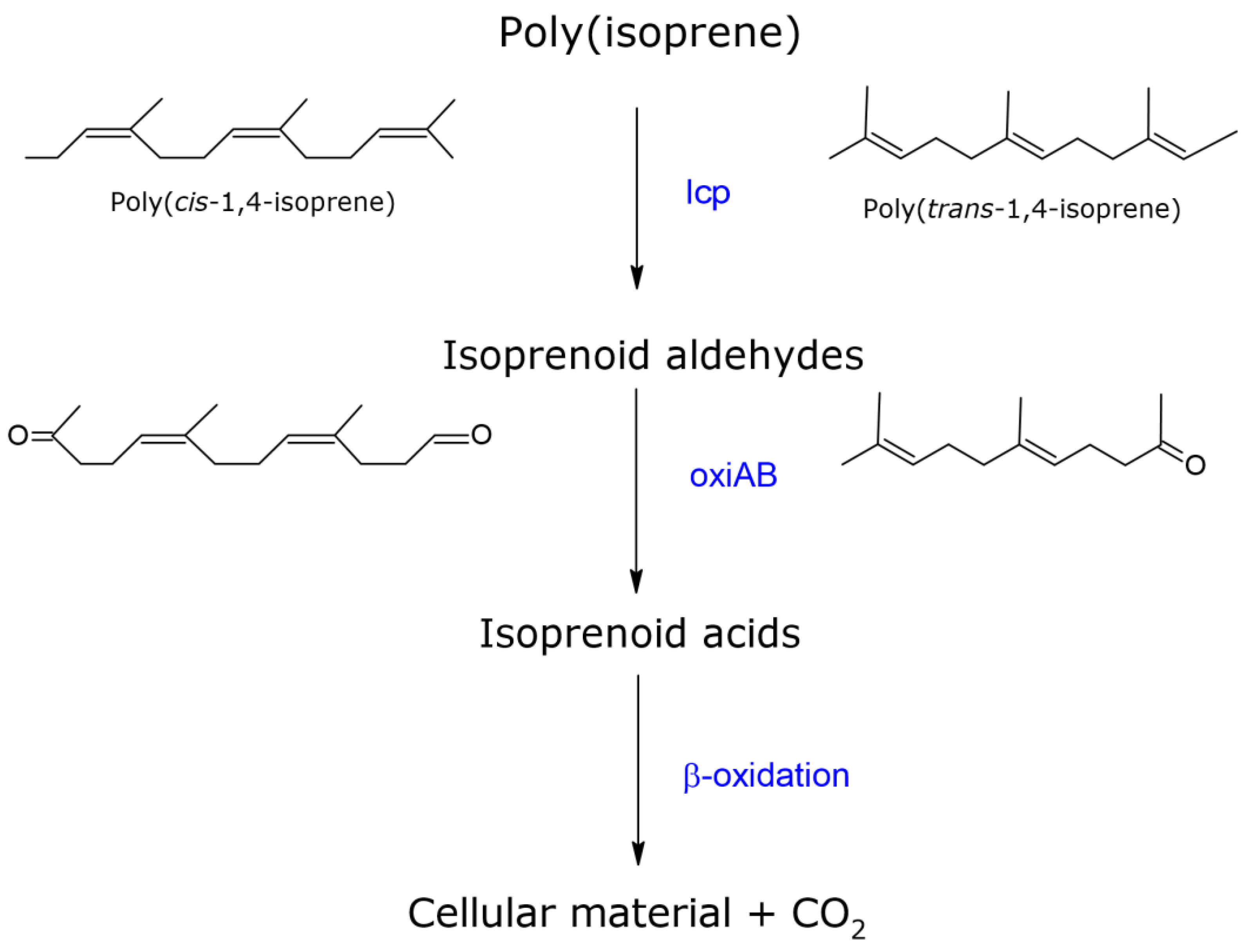Erratum: Basik et al. Microbial Degradation of Rubber: Actinobacteria. Polymers 2021, 13, 1989
- Chemical structures for poly(cis-1,4-isoprene) were wrongly labelled and have been corrected as shown below.
- ß-oxidation should be replaced by oxiAB.
- oxiAB should be replaced by ß-oxidation.

Reference
- Basik, A.A.; Sanglier, J.-J.; Yeo, C.T.; Sudesh, K. Microbial Degradation of Rubber: Actinobacteria. Polymers 2021, 13, 1989. [Google Scholar] [CrossRef]
Publisher’s Note: MDPI stays neutral with regard to jurisdictional claims in published maps and institutional affiliations. |
© 2021 by the authors. Licensee MDPI, Basel, Switzerland. This article is an open access article distributed under the terms and conditions of the Creative Commons Attribution (CC BY) license (https://creativecommons.org/licenses/by/4.0/).
Share and Cite
Basik, A.A.; Sanglier, J.-J.; Yeo, C.T.; Sudesh, K. Erratum: Basik et al. Microbial Degradation of Rubber: Actinobacteria. Polymers 2021, 13, 1989. Polymers 2021, 13, 2700. https://doi.org/10.3390/polym13162700
Basik AA, Sanglier J-J, Yeo CT, Sudesh K. Erratum: Basik et al. Microbial Degradation of Rubber: Actinobacteria. Polymers 2021, 13, 1989. Polymers. 2021; 13(16):2700. https://doi.org/10.3390/polym13162700
Chicago/Turabian StyleBasik, Ann Anni, Jean-Jacques Sanglier, Chia Tiong Yeo, and Kumar Sudesh. 2021. "Erratum: Basik et al. Microbial Degradation of Rubber: Actinobacteria. Polymers 2021, 13, 1989" Polymers 13, no. 16: 2700. https://doi.org/10.3390/polym13162700
APA StyleBasik, A. A., Sanglier, J.-J., Yeo, C. T., & Sudesh, K. (2021). Erratum: Basik et al. Microbial Degradation of Rubber: Actinobacteria. Polymers 2021, 13, 1989. Polymers, 13(16), 2700. https://doi.org/10.3390/polym13162700




